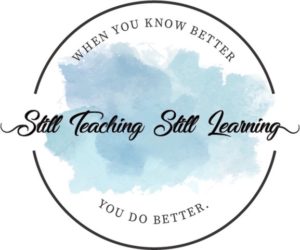What do you do when your students (or your own children) are reading below grade level?
First, check on what you might need to do to get a further evaluation for a possible learning disability. Early intervention is key.
But what about the students who either did not qualify for exceptional children’s services or who are not making progress in reading?

Two things that I think are critical for children who are reading below grade level:
1 – check for underlying phonological awareness needs
2 – build background and content knowledge.
I’ll write about building background and content knowledge in a later post.
But what about phonological awareness? This book has influenced my thinking: Equipped for Reading Success by David Kilpatrick. I will be using the interventions from this book with some of my readers this year.



HOW TO ASSESS PHONOLOGICAL AWARENESS
The first step is to administer the PAST (Phonological Awareness Skills Test) assessment with each student. This test is intended to be an informal, individual assessment. The skills tested are skills that most students should have mastered in earlier grades (such as phoneme deletion and substitution). We all know, however, that there is a big difference between “should have mastered” and “actually mastered.”
To administer the test, you will need chips for the segmentation part. The entire test is given orally, and each section should take no longer than 3-4 minutes.
Here is a PDF of the PAST.
And here is more information about each part of the test.
This is a “teacher script” for what to say for each part of the test and the student recording sheet is here.
Since I teach fifth grade, I use this guide to give me the suggested starting points. I use the grade three guidelines for where to begin assessment of my lower-level readers.



THREE MOST IMPORTANT READING ASSESSMENTS
Dr. Marnie Ginsberg of Reading Simplfied has a great blog post HERE about why we need to collect information from these brief assessments.
She says:
“In the U.S., for instance, nearly 65% of 4th grade readers are NOT proficient in reading. Teachers of these struggling readers are likely aware that these students aren’t “on grade level.”
However, they are rarely well-informed as to WHY their students aren’t on grade level. We give yearly, and sometimes quarterly, comprehension tests, but these assessments do not explain where the students’ reading weaknesses lie.
Comprehension tests merely give an indication of a child’s overall reading ability or performance.
But these reading tests give almost no information to inform instruction.Is the child behind because of:
*limited reading practice?
*poor decoding?
*lack of comprehension strategies?
*weak vocabulary knowledge, or
*poor word recognition?These and other sub-processes are all possible causes of students’ reading achievement struggle. But a comprehension test alone will not determine which problem, or problems, are the root trouble.
Again, this is a problem. It’s like we’re sending teachers out on the ocean near a rocky coast with no lighthouse for miles.”



Marnie says that the three most important tests to give are these:
1 – a nonsense word reading test (to check the reader’s sound-based decoding ability)
2 – a word identification test (to check how many words a reader can recognize by sight)
3 – a fluency test (to check reading rate, reading with expression, and phrasing).
For those three important tests, here are some links to assessments you could use:
1 – a nonsense word reading test from Dyslexia International
2 – the San Diego Quick Assessment (word identification test)
3 – a link to ReadWorks for getting passages to check a student’s fluency. How to select a passage? Once you know the grade level of the student’s sight word recognition (from the San Diego Quick Assessment), choose a passage from ReadWorks that is one grade level below. (For example: if the student recognizes words at the third-grade level, select a second-grade level passage to assess fluency.) You want the student to recognize most of the words quickly so that you can accurately measure how many words correct they can read in one minute to test their fluency.
Here is a good fluency reading scale to help determine if a child’s fluency is the reading issue.



Marnie goes on to explain that you might not have to administer all three assessments. Since sound-based decoding is the foundation for other reading skills, we should check that first (with the nonsense word reading test). If the student has trouble with that test, then most of our intensive instruction will start there.
If the student is a good decoder, then the brain can do the work of remembering how words look by automatic recognition. We can test that with the word identification test. If the student has trouble with that test, then most of our intensive instruction will start there.
Marnie says:
“Thus, if a child has poor sound-based decoding and poor word identification, I’m not really concerned about his fluency for now. If I’m pressed for time, I won’t even measure his reading rate. Instead, I would focus relentlessly on his sound-based decoding skills using activities like Switch It, Read It, and Sort It, and lots of guided reading.
As decoding is shored up, word identification gradually improves. Once a student has sufficient knowledge of the code and strong decoding skills, she just needs reading practice to learn to recognize more and more words by sight automatically.Similarly, fluency will follow along later after word identification, with wide reading and re-reading of short selections.
Thus, most students with a reading difficulty should at least be given a nonsense word reading test to examine their sound-based decoding. In K-3, I would give all my students a nonsense word reading test, actually.”
I am learning more about Marnie’s work by participating in her Reading Simplified Academy.
Another great resource person that I highly recommend is Jen Jones of Hello Literacy. Here is a link to her page on Facebook and a link to her Teachers Pay Teachers store.



MY GAME PLAN
For the students in my below grade level reading groups, I am administering the PAST to check their phonological awareness skills. I will use the interventions in Equipped for Reading Success to address those needs. After the PAST (which takes about five to ten minutes per student), I will administer the nonsense word reading test. If my students do well with that, I will administer the San Diego Quick Assessment. We may not even need the fluency assessment yet.



What will I do once I have all this assessment data? Stay tuned for a future post about how I am structuring those guided reading sessions!
